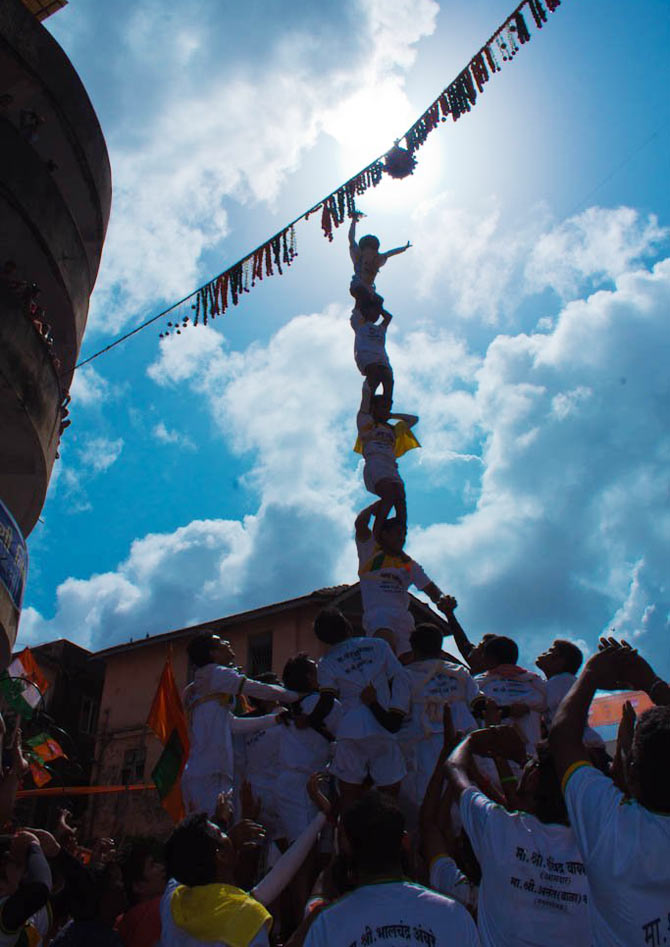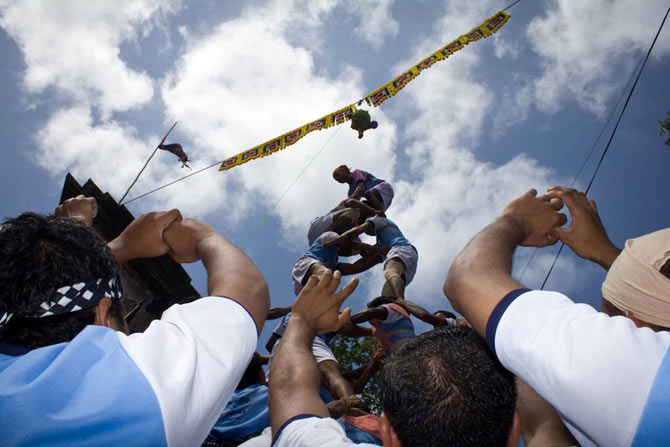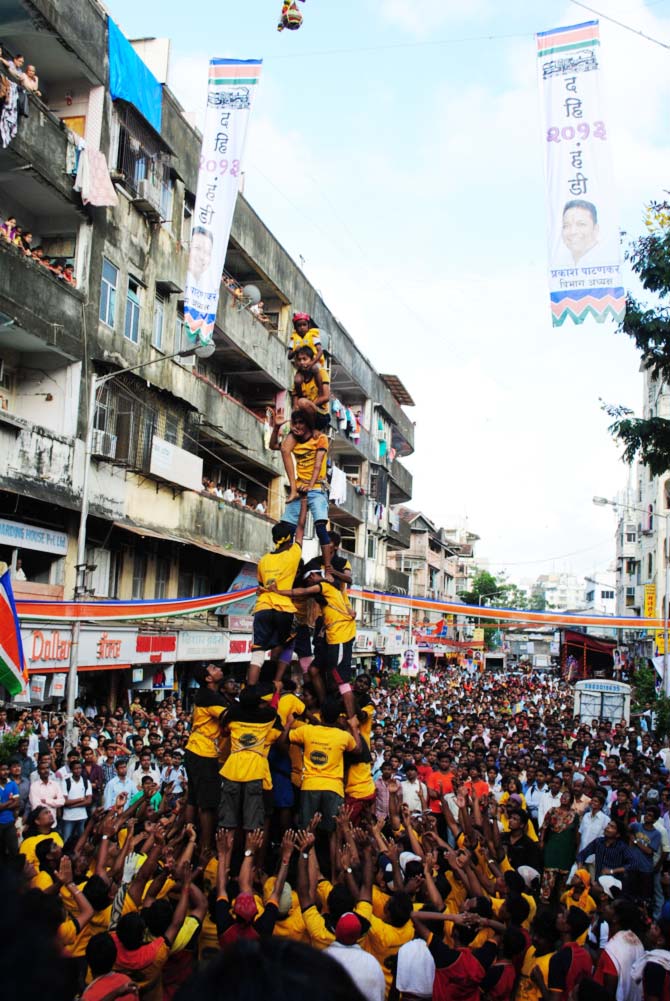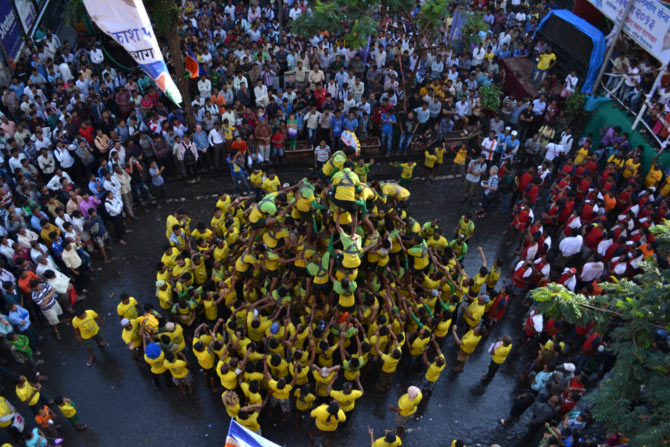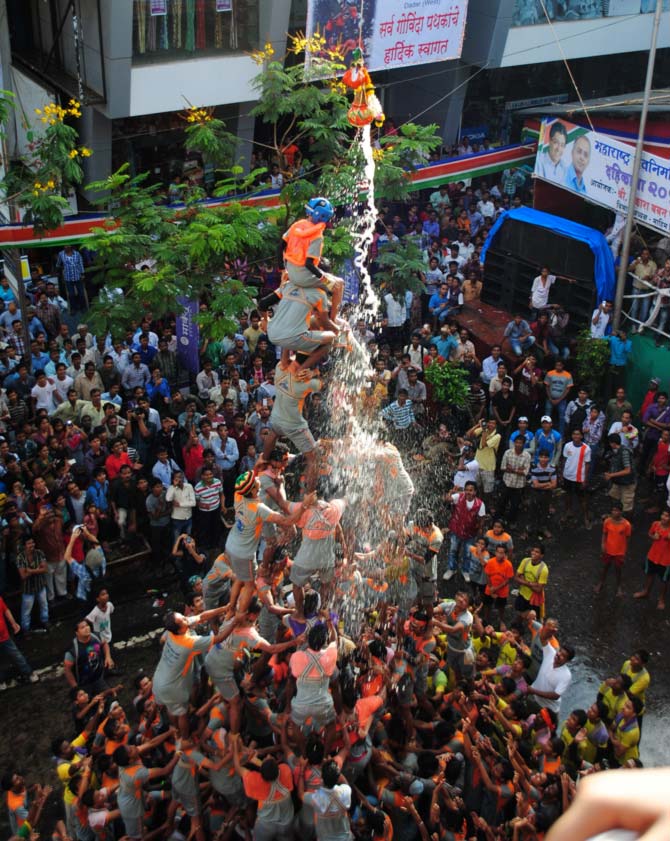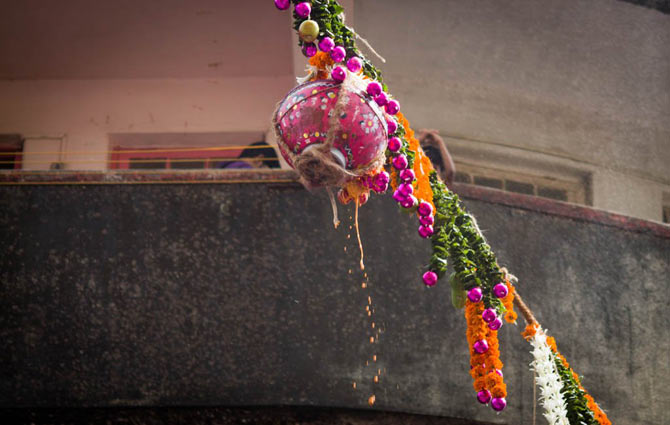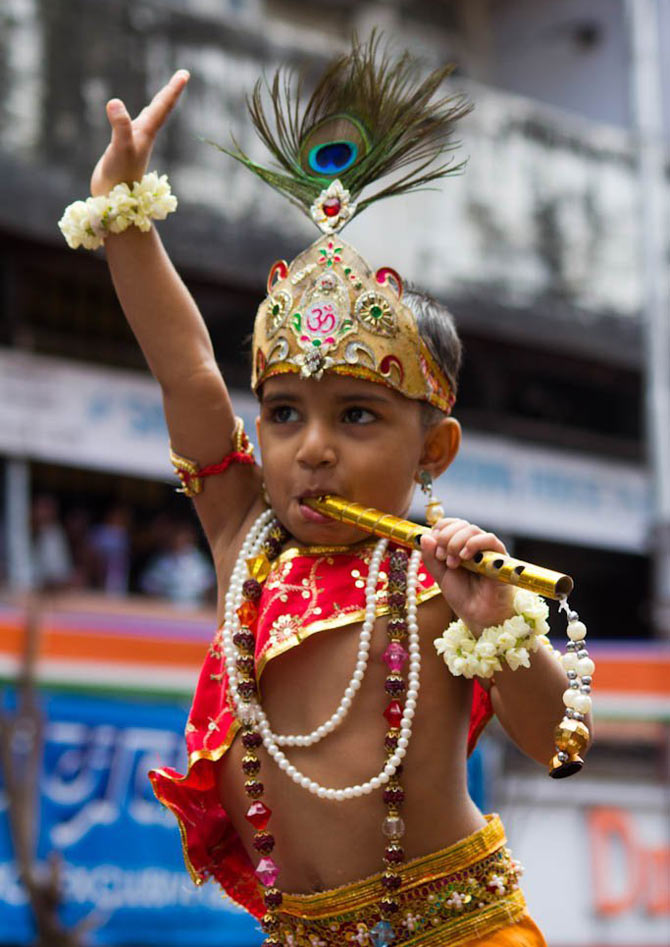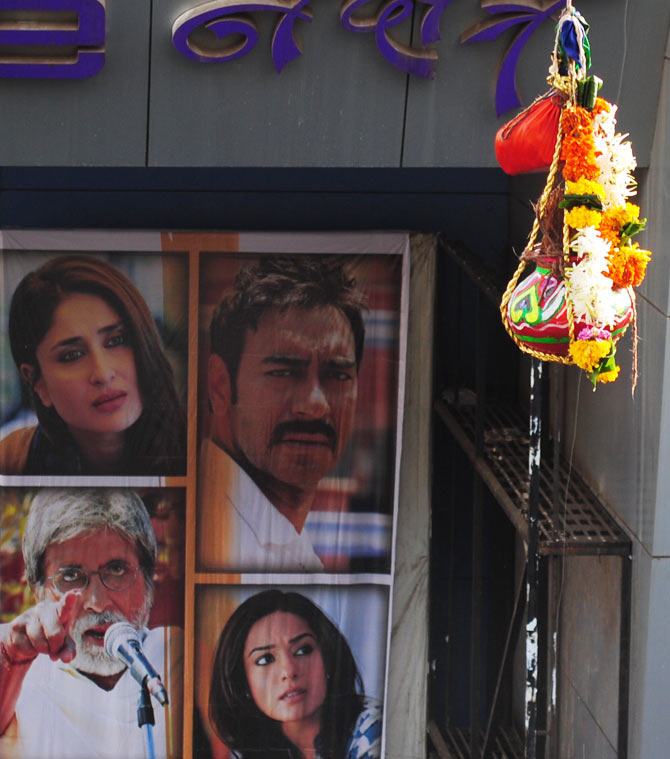 | « Back to article | Print this article |
Janmashtami photos: All for a pot of curd and buttermilk
Photographers Abhishek Rane and Reuben NV and Nadisha Daniel document the popular practice of forming human pyramids on Janmashtami in Maharashtra.
In various parts of Maharashtra, the birth of Lord Krishna is celebrated by breaking a pot containing curd and buttermilk suspended high above the ground by forming human pyramids.
The practice has its roots in the story that as a child Krishna and his friends did just that to reach the curds and cream that were out of their reach.
Today, the ritual has become something of a sport -- a display of skill and teamwork of govindas or the young men who form the pyramids to reach the pot of curds or dahi handi that is tied several feet above the ground.
Located right outside Dadar railway station (west), this is one of the oldest dahi handis in Mumbai. It is also often the most photographed one courtesy a flyover bridge that offers a perfect vantage point for several photographers.
This photograph however has been shot from the point of view of the average govinda standing at the bottom of the pyramid.
Janmashtami photos: All for a pot of curd and buttermilk
Each year, the pot rises higher.
In what has become a game of one-upmanship, local politicians who organise many of these competitions offer hundreds of thousands of rupees -- the largest prize this year was Rs 1.11 crore -- for the group that breaks the pot.
Some of the handis are tied at almost 50 feet above the ground and it takes an eight- or sometimes a nine-tier pyramid to reach the top.
Janmashtami photos: All for a pot of curd and buttermilk
Often falling towards the end of the monsoons, Janmashtami sees occasional showers of rain and overcast skies. The celebrations in the road outside Dadar railway station attract thousands of visitors. On the day, the shops lining it are shut even as it becomes virtually impossible to walk in the crowd.
Janmashtami photos: All for a pot of curd and buttermilk
Accidents aren't unusual during the festival. Each year newspapers report injuries and occasional deaths due to falls from great heights. This year at least two men died and around 250 have suffered injuries in celebrations across the cities of Mumbai and Thane.
While the cause of both the deaths has been bike accidents (several govindas travel to the venue on bikes, many others in trucks), a 20-year-old suffered a cervical spine fracture after a fall, which has paralysed him waist down, while another one has been paralysed neck down.
Janmashtami photos: All for a pot of curd and buttermilk
Another group of govindas make an attempt to break a dahi handi in the neighbouring lane in Mumbai's Dadar area. It is, confessedly, a sight to behold -- men scaling such heights just to break a pot containing curd and buttermilk.
Janmashtami photos: All for a pot of curd and buttermilk
As mentioned earlier, several dahi handi competitions are organised by local political parties. This one has the support of the Maharashtra Navnirman Sena, a rebel political party that branched off from the Shiv Sena and is being led by its former chief Bal Thackeray's nephew Raj Thackeray.
Janmashtami photos: All for a pot of curd and buttermilk
The prize money for breaking the pot varies from place to place. While sometimes it includes gifts such as cars and bikes and other household electronic items, the ones that draw the most enthusiasts have large cash prizes that fall in the range of a few hundred thousand rupees at the very least.
This year however, Vijay Jethva a politician from north Mumbai's Borivali area cheekily offered $375 as prize money. On the day when the rupee closed at 66.44 against the dollar, the prize money amounted close to Rs 25,000.
Janmashtami photos: All for a pot of curd and buttermilk
As a country, we take great amount of pride in our tolerance towards all religions. This young Muslim lad, part of one of the govinda groups that go from place to place to break dahi handis, exemplifies the very spirit.
Janmashtami photos: All for a pot of curd and buttermilk
A young boy gets into the mood of things as he watches groups of govindas having a go at the pot hanging over their heads.
Janmashtami photos: All for a pot of curd and buttermilk
Remains of the day: a broken pot hangs from the rope suspended high above the ground while a hoarding announces the release of this week's Bollywood movie. (Read its review here and here.)
